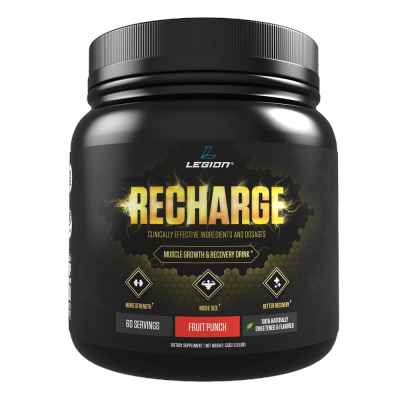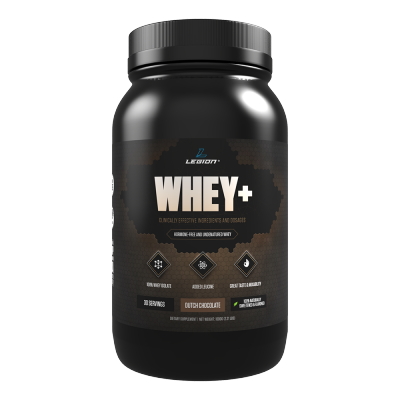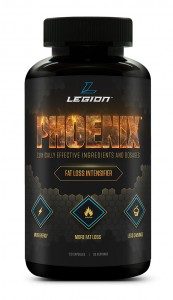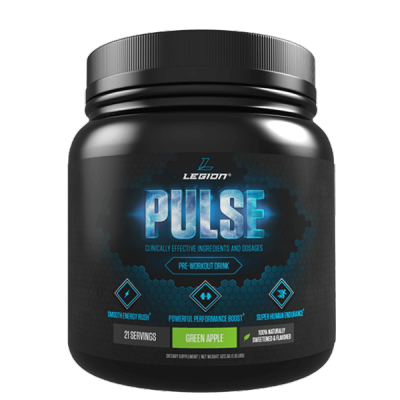Which of the following statements do you think is true?
- “You have to eat clean to get lean.”
- “If your body has too many toxins, it can’t shed fat.”
- “If you eat too many carbs (and starchy carbs in particular), you won’t lose weight.”
- “Certain foods ‘clog’ your hormones and keep you fat.”
- “Calories in vs. calories out is bunk and calorie counting doesn’t work.”
If you answered “none,” then you may not need to read this article.
If you’re surprised to see me say that, though, then you definitely do.
Because this is where we’re going to completely demystify dieting and learn, once and for all, exactly how to use food to help us lose fat, gain muscle, and stay healthy…for the rest of our lives.
Even better, we’re going to learn how to enjoy it.
And not in a perverse, capture-bonding type of way, either (“THE FIRST TWO MONTHS OF BOILED CHICKEN AND STEAMED BROCCOLI WERE AWFUL BUT NOW I LOVE IT!”).
Nay, actually enjoy it.
Imagine…
- No more fad diets.
- No more forcing down joyless, tasteless meals.
- No more battling hunger and cravings.
- No more struggling to lose or gain weight.
What if you were immune to all the mainstream diet hysteria and gimmicks?
What if you knew exactly how to use your diet to change your body composition as desired?
And what if you didn’t have to follow a litany of nonsensical rules and restrictions or forsake everything you actually like to eat?
Well, as you’ll soon see, you can have all of those things.
Let’s get to it.
(Or if you’d prefer to skip the ins and outs of meal planning, and you just want to know how many calories, how much of each macronutrient, and which foods you should eat to reach your goals, no problem! Just take the Legion Diet Quiz, and in less than a minute, you’ll know exactly what diet is right for you. Click here to check it out.)
- Meal Planning Made Easy Tip #1:
- Calculate Your Daily Calorie Intake Correctly
- Energy Balance and Weight Loss
- Energy Balance and Muscle Building
- Meal Planning Made Easy Tip #2:
- Calculate Your Macronutrients Correctly
- Meal Planning Made Easy Tip #3:
- Eat Foods You Like
- Meal Planning Made Easy Tip #4:
- Meal Scheduling 101
- Meal Planning Made Easy Tip #5:
- Adjust Based on Your Results
- Examples of Good Meal Planning
- What About Supplements?
- What did you think about meal planning? Have anything else you'd like to add? Let me know in the comments below!
Table of Contents
Want to listen to more stuff like this? Check out my podcast!
Meal Planning Made Easy Tip #1:
Calculate Your Daily Calorie Intake Correctly
What would you think if someone told you he wants to drive cross-country without looking once at his gas tank?
Instead, he wants to stop for gas when the mood strikes him and pump as much as feels like pumping.
I don’t know about you, but my response would be along these lines:
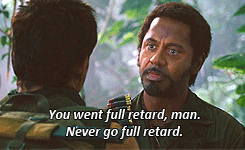
Imagine that he snaps back with one of the following replies:
- “I won’t be a slave to the fuel meter. I will drive as far and pump as much or little as I want!”
- “I read this book that said you don’t have to watch your gas tank if you use organic, gluten-free, low-carb, non-GMO, #blessedup gasoline that doesn’t clog your engine like other fuel.”
Again, I don’t know about you, but this would be me:

Jokes aside, my point is this:
When someone who wants to gain or lose weight says that he doesn’t want or have to pay attention to caloric intake, he’s being just as stupid.
It’s possible to lose or gain weight without counting calories…to a degree.
It’s not likely to work well over the long term, though.
The bottom line is calorie (meal) planning and/or tracking is the most reliable and effective way to lose fat and build muscle.
The reason for this is if you get caloric intake wrong, nothing else matters. You will not lose weight or build muscle effectively.
Now, if you’re afraid of what I’m going to say next…don’t worry.
This isn’t about starving or depriving yourself.
It’s about freeing yourself.
Eating foods you actually want to eat.
Knowing, for a fact, that you’re going to get results each and every week.
And yes, it all starts with calories.
Specifically, it starts with the relationship between how many calories you eat and how many you burn, which is known as energy balance.
Energy Balance and Weight Loss
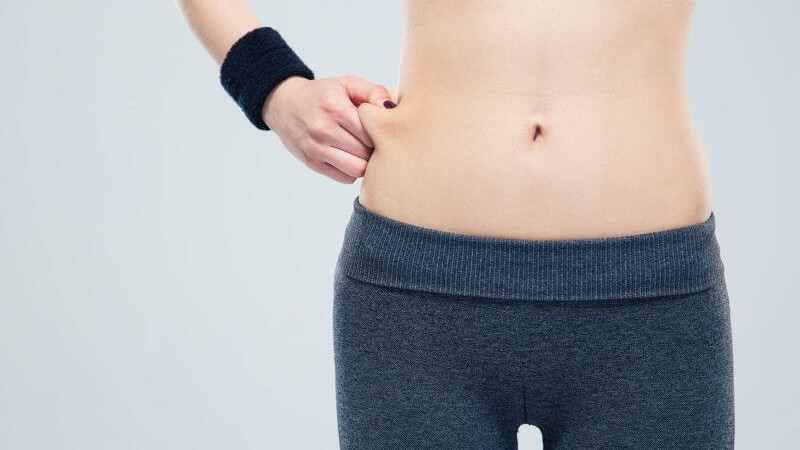
When you set out to learn or achieve something, one of your first goals is to separate the “negotiables” from the “non-negotiables.”
That is, you want to discover and separate the fundamentals that you must understand and apply precisely if you want results from the “other stuff” that is less important and influential.
Well, when it comes to losing fat, here’s the most basic of the fundamentals:
If you want to lose fat, you must feed your body less energy than it burns.
This is known is creating a “calorie deficit,” and when in this state, your body will slowly whittle down its fat stores to obtain the energy it needs.
Now, if you’re shaking your head, thinking I’m drinking decade-old Kool-Aid , answer me this:
Why has every single controlled weight loss study conducted in the last 100 years…including countless meta-analyses and systematic reviews…concluded that meaningful weight loss requires energy expenditure to exceed energy intake?
Why have bodybuilders dating back just as far…from Sandow to Reeves and all the way up the line…been using, and continue to use, this knowledge to systematically and routinely reduce and increase body fat levels?
And why do new brands of “calorie denying” come and go every year, failing to gain acceptance in the weight loss literature?
The bottom line is this:
A century of metabolic research has proven, beyond the shadow of a doubt, that energy balance, operating according to the first law of thermodynamics, is the basic mechanism that regulates fat storage and reduction.
Maintaining a calorie deficit will, over time, result in an overall reduction of body fat percentage, and is the only way to do this.
How Large Should Your Calorie Deficit Be?
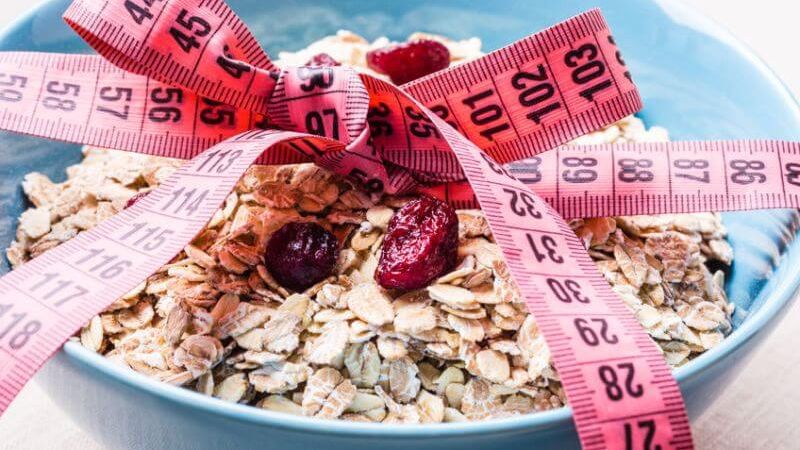
When you want to lose weight, how much less energy should you feed your body compared to what it needs?
Well, while many weight loss diets advocate eating very little every day, this isn’t advisable for most people.
This type of “starvation dieting” comes with quite a few negative side effects, such as metabolic slowdown, excessive muscle loss, extreme irritableness, and more.
Instead, you want to put your body in an aggressive (but not reckless) calorie deficit.
Specifically, I recommend that you feed your body 20 to 25% fewer calories than it burns every day.
This will allow you to lose anywhere from 0.5 to 2 pounds per week while also preserving your metabolic health, energy levels, hormone production, mood, and general well-being.
I’m not plucking that advice out of thin air, either.
It’s based on research conducted by scientists at the University of Jyväskylä and my experience working with thousands of people of all ages and circumstances.
Here’s how the study worked:
It was conducted with 20-to-35 year-old national and international level track and field jumpers and sprinters with low levels of body fat (at or under 10%).
They were split into two groups:
- A daily calorie deficit of 300 calories (about 88% of TDEE).
- A daily calorie deficit of 750 calories (about 76% of TDEE).
It’s also worth noting that this group was eating over 2,000 calories per day, which isn’t a “starvation diet” by any means.
Both groups followed a high-protein diet and trained as they normally would.
After 4 weeks, the athletes utilizing a 300-calorie deficit lost very little fat and muscle while the group utilizing a 750-calorie deficit lost, on average, about 4 pounds of fat and very little muscle.
Similar results were seen in another study conducted by scientists at McMaster University, which separated 40 young, overweight men into two groups.
One group was put on the following regimen:
- 40% calorie deficit (about 60% of TDEE)
- High protein intake (2.4 g/kg)
- 6 weightlifting and HIIT workouts per week
And the other group did the same workouts but ate half the protein.
Yes, you read that right.
These people ate just over half of the energy they were burning and did 6 weightlifting and HIIT cardio workouts per week.
If you were to show that protocol to any personal trainer, they would say you’re crazy.
Well, after four weeks, here’s what happened:
- The participants in the high-protein group lost, on average, about 10.5 pounds of fat while gaining about 2.5 pounds of muscle.
- The low-protein group lost about 8 pounds of fat and gained no muscle.
Now, that regimen is far more intense than I would recommend because I guarantee you those people didn’t have a good time.
It does show you just how militant you can be without ruining your body composition, though.
Just how much you can push your body depends on many things, including age, genetics, training history, diet, and sleep hygiene, but I can tell you this:
If you’re a relatively healthy adult, you can do very well with a setup like this:
- 3 to 6 hours of heavy weightlifting per week (3 to 5 workouts)
- 1 to 2.5 hours of cardio per week (depending on your goals)
- 20 to 25% calorie deficit with a high-protein and high-carb macro split
This is the basic strategy behind my Bigger Leaner Stronger (men) and Thinner Leaner Stronger(women) programs, by the way, and they work.
Calculating Your Daily Calorie Intake for Weight Loss

The first step of calculating your calorie needs for weight loss is determining, with some accuracy, how much energy you’re burning every day.
Some methods of doing this involve tracking and inputting types of physical activity ranging from sitting idle to intense exercise.
While this is one way of doing it, I think it’s unnecessarily complicated. Instead, I recommend you use a simple, two-step method:
1. Use the following calculator to determine your total daily energy expenditure (TDEE).
Your TDEE is exactly what it sounds like–an approximation of how much energy your body is burning every day.
This is calculated using an equation known as the “Katch McArdle” equation, which first determines your basal metabolic rate (the amount of energy your body burns at rest), which is then multiplied based on your activity level (the more active you are, the larger the multiplier).
And in case you’re wondering why the activity multipliers in my calculator are slightly lower than the standard ones, it’s because those are too high.
Unless you have an abnormally fast metabolism, your TDEE estimation will likely come out high if you use the standard multipliers.
2. Multiply your TDEE by 0.75 to determine your target caloric intake.
This will create a 25% calorie deficit, which will allow you to rapidly (and healthily) lose fat.
Energy Balance and Muscle Building

You’ve probably heard that big muscles require a big appetite.
You’ve probably also heard that “bulking” is unnecessary and even counter-productive because of excessive fat gain.
Well, there’s truth in both of these statements.
If you follow a cookie-cutter bodybuilding bulking program, you will probably gain a lot of fat (and, unfortunately, a lot more fat than muscle).
That said, if you want to maximize muscle growth, you need to eat a rather large amount of food (which requires a robust appetite).
The reason for this is simple:
Muscle growth is strongly affected by how much food you eat.
Not just protein (which matters too, of course)…but food (calories).
The bottom line is if you don’t eat enough calories every day, you’re going to always struggle with gaining muscle.
The reason for this is simple:
When you’re in a calorie deficit, fat loss is only one of the physiological ramifications. Several others aren’t desirable:
- It decreases your body’s ability to synthesize muscle proteins.
That is, when in a calorie deficit, your body can’t build muscle tissue as efficiently as when you’re not in a deficit.
This further decreases protein synthesis and increases protein degradation rates.
- It impairs workout performance.
When you’re in a calorie deficit, you can expect a reduction in strength, muscle endurance, and overall energy levels.
This, in turn, impairs progression in your workouts, which impairs muscle growth.
What do these three things tell us about diet and muscle gain, then?
It’s simple:
If you want to build muscle effectively, you need to make sure you’re not in a calorie deficit.
Instead, you want to do the opposite: feed your body slightly more energy than its needs.
This is known as placing it in a “positive energy balance” or “calorie surplus.”
This ensures your body can build muscle unhindered.
It results in fat gain as well, though, as a portion of the energy surplus is stored as body fat.
(It’s worth noting that some people–newbies, mainly–can build muscle and lose fat at the same time, but they’re a small minority. The rest of us will do best by alternating between periods of cutting and bulking, as described here.)
This is true regardless of the dietary protocol you use.
If you’re in a calorie deficit several days per week, you will gain less muscle than if you weren’t.
How large of a calorie surplus is desirable, though?
Let’s find out.
How Large Should Your Calorie Surplus Be?

Many people mistakenly assume that a large calorie surplus helps you build muscle faster than a slight one.
This isn’t true.
It only causes you to gain more fat (which in turn can slow down muscle gain).
The reason for this is being in a calorie surplus doesn’t accelerate muscle growth per se–it just ensures you’re not hindering growth by being in a deficit.
Think of it not as pressing down on the gas but letting off the brake.
Now, one way of achieving a calorie surplus is throwing down many thousands of calories every day.
If you eat like a Clydesdale, you will gain weight.
You don’t want to just gain weight, though. You want to gain muscle.
And that’s why you want to maintain a slight calorie surplus when bulking.
This allows you to build muscle efficiently without gaining large amounts of fat.
Specifically, I recommend that you maintain a 5 to 10% calorie surplus when bulking.
That is, eat around 105 to 110% of your total daily energy expenditure (and balance your macros properly) and you’ll be in the “sweet spot” for gaining “lean muscle.”
You know you have to right when you’re gaining 0.5 to 1 pound per week (and about half that for women).
And in terms of the ratio muscle to fat gain, 1:1 seems to be pretty standard (for every 1 pound of muscle gain, 1 pound of fat is gained too).
If you’re gaining more fat than muscle, you’re probably eating more than you should (whether you realize it or not). And if you’re gaining more muscle than fat, you probably have good genetics.
Calculating Your Daily Calorie Intake for Building Muscle
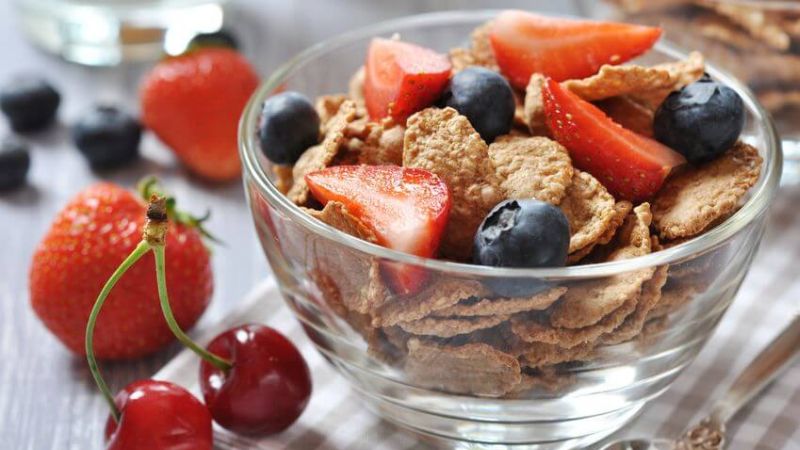
By now, you know the drill.
As with weight loss, we’re going to first calculate your TDEE and then multiply it to determine your target caloric intake.
In this case, though, we’re going to multiply it by 1.1 to create a slight (~10%) calorie surplus (about 110% of TDEE).
Meal Planning Made Easy Tip #2:
Calculate Your Macronutrients Correctly
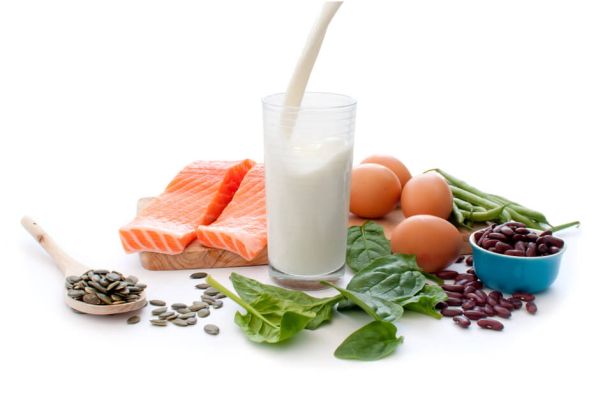
You’ve probably heard that a “calorie isn’t a calorie” and that the “calories in vs. calories out” model is hidebound and outmoded.
Newfangled diet “gurus” claim that the “new school” of dieting is all about what you eat, not how much.
Well, to them I would like to introduce Professor Mark Haub.
Professor Haub wanted to give the scientifically indisputable realities of energy balance a boost in popularity, so he lost 27 pounds on a diet of protein shakes, Twinkies, Doritos, Oreos, and Little Debbie snacks.
His point wasn’t that you should eat junk food–he just wanted to demonstrate how little the quality of the food you eat matters in terms of weight loss.
That said, our goals are more specific than just weight loss:
We want to gain more muscle than fat and we want to lose fat, not muscle.
And when viewed in that context, a calorie is not a calorie because some calories are more conducive to those goals than others.
To understand why, we must view caloric intake through the lens of macronutrients.
What Are Macronutrients?
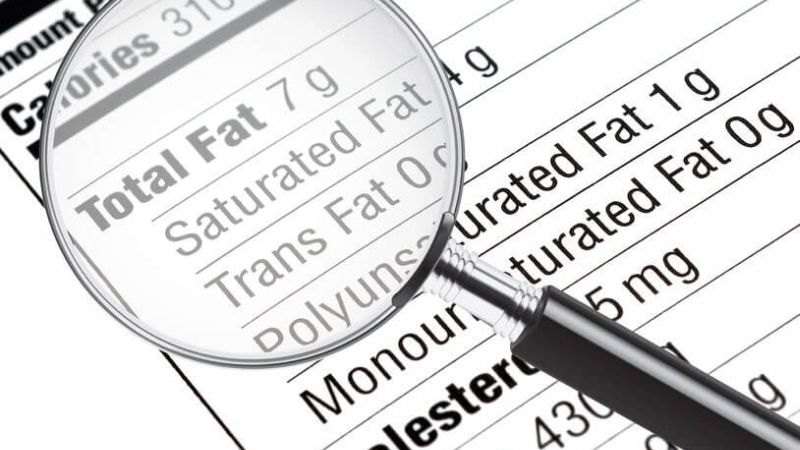
The dictionary defines “macronutrient” like this:
A macronutrient is any of the nutritional components of the diet that are required in relatively large amounts: protein, carbohydrate, fat, and minerals such as calcium, zinc, iron, magnesium, and phosphorous.
The macronutrients we’re concerned with in particular here are protein, carbohydrate, and fat.
Specifically, we want to know how much of each we should be eating every day to optimize our results.
That is, how do we best allot our daily calories to protein (~4 calories per gram), carbs (ditto), and fats (~9 calories per gram)?
Let’s find out…
A high-protein diet is extremely effective for maintaining muscle while in a calorie deficit and maximizing muscle growth while in a calorie surplus.
If you’ve spent any time in the fitness space, this probably doesn’t come as a surprise.
As you’ll soon see, however, you don’t need to eat as much protein as many people think.
Carbs don’t make or keep you fat and they help you preserve and build muscle.
Low-carb dieting is all the rage these days…and as far as most of us fitness folk are concerned, it’s much ado about nothing.
There are about 20 studies that low-carb proponents bandy about as definitive proof of the superiority of low-carb dieting for weight loss.
If you read the abstracts of these studies, low-carb dieting definitely seems more effective, and this type of glib “research” is what most low-carbers base their beliefs on.
But there’s a big problem with many of these studies, and it has to do with protein intake.
The problem is the low-carb diets in these studies invariably contained more protein than the low-fat diets. Yes, one for one…without fail.
What we’re actually looking at in these studies is a high-protein, low-carbohydrate diet vs. low-protein, high-carb diet, and the former wins every time.
In many cases, the high-carb groups were given less protein than even the RDI of 0.8 grams per kg of body weight, which is just woefully inadequate for weight loss purposes.
Research has shown that even double and triple those (RDI) levels of protein intake aren’t enough to fully prevent the loss of lean mass while restricting calories.
My point is this:
We can’t ignore difference in protein intake in the groups of people in these studies and say the low-carb diets were more effective because of the carb restriction.
A proper oranges-to-oranges comparison would test a high-protein, low-carb diet vs. a high-protein, high-carb diet.
Well, such studies have been conducted and demonstrate that…
When protein intake is high, restricting carbs doesn’t speed up fat loss.
In other words, when protein intake is high and matched among low-carb and high-carb dieters, there is no significant difference in fat loss.
Why is protein intake the linchpin here, you wonder?
Because, as you now know, adequate protein intake while dieting for fat loss is vital for preserving lean mass, both with sedentary people and especially with athletes.
If you don’t eat enough protein when dieting to lose weight, you can lose quite a bit of muscle, and this in turn hampers your weight loss in several ways:
- It causes your basal metabolic rate to drop
- It reduces the amount of calories you burn in your workouts
- It impairs the metabolism of glucose and lipids
Protein has other weight loss benefits too, including a high thermic effect, increased satiety, favorable nutrient partitioning, and more.
So that’s carbs and fat loss. What about muscle and strength gains?
Well, carbs aren’t just neutral in this regard–they directly help you build muscle and get strong faster.
There are two primary reasons for this:
1. Weightlifting rapidly drains your muscles’ glycogen stores and fully replenishing these stores improves performance and reduces exercise-induced muscle breakdown.
Glycogen is a form of carbohydrate stored primarily in the liver and muscles.
2. Carbs elevate insulin levels, which doesn’t stimulate protein synthesis like amino acids but does exert anti-catabolic effects.
What that means is insulin decreases the rate of protein breakdown in your body, which creates a more anabolic environment in which muscle can grow faster.
(If you want to learn more about the physiological mechanisms in play here, check out this article.)
This helps us understand why several studies have found that high-carb diets are superior for building muscle and strength.
One of these studies was conducted by scientists at Ball State University.
Researchers found that low muscle glycogen levels (which is inevitable with low-carb dieting) impair post-workout cell signaling related to muscle growth.
Another study conducted by researchers at the University of North Carolina found that when athletes followed a low-carb diet, resting cortisol levels increased and free testosterone levels decreased.
This is more or less the exact opposite of what we want for optimizing performance and body composition.
We find further evidence of the superiority of high-carb dieting in a study conducted by researchers at the University of Rhode Island.
They looked at how low- and high-carb intakes (about 226 and 353 grams per day, respectively) affected exercise-induced muscle damage, strength recovery, and whole body protein metabolism after a strenuous workout.
The result was the subjects on the lower-carb diet lost more strength, recovered slower, and showed lower levels of protein synthesis.
Similar results were seen in yet another study, this time conducted by scientists at McMaster University, which compared high- and low-carb dieting with people performing daily leg workouts
They found that those on the low-carb diet experienced higher rates of protein breakdown and lower rates of protein synthesis, resulting in less overall muscle growth than their higher-carb counterparts.
Furthermore, studies show that bodybuilders following a high-protein, high-carb, low-fat diet lose less muscle than those following a high-protein, low-carb, high-fat diet.
I could go on, but all this is why my general position on carbohydrate intake is as follows:
If you’re healthy and physically active, and especially if you lift weights regularly, you’re probably going to do best with more carbs, not less.
There are exceptions, of course, but that holds true for the vast majority of people, regardless of age, gender, genetics, or training experience.
Eat enough dietary fat to support basic health.
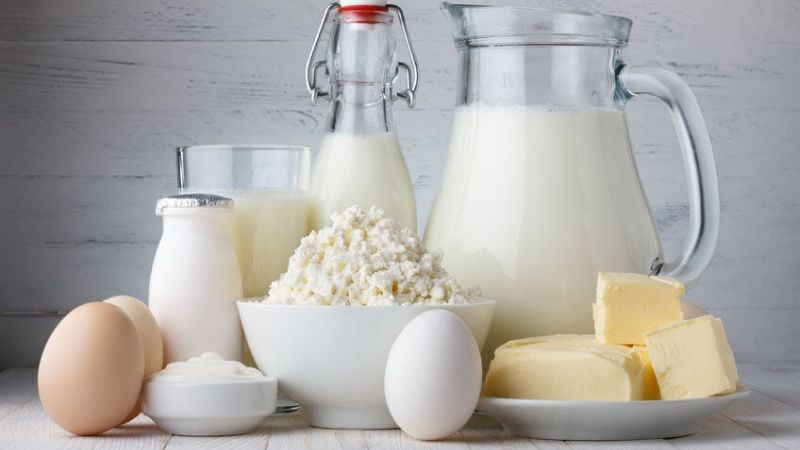
I’ve written extensively about how much and why kinds of fat we should be eating, so I’ll give a Cliff’sNotes version here.
Your body needs a certain amount of dietary fat to support vital physiological processes related to cell maintenance, hormone production, insulin sensitivity, and more.
This is why, according to the Institute of Medicine, adults should get 20 to 35% of their daily calories from dietary fat.
And this is (at least partially) why you seen these numbers echoed throughout the fitness space.
There’s a problem, though:
These recommendations are based on the calorie needs of the average sedentary person (about 2,000 calories per day).
This is significant because people that exercise frequently and have higher amounts of muscle burn far more energy than the average person and thus require far more calories.
Just because their bodies need more calories due to activity doesn’t mean they need more fat, though.
That is, your body needs a certain number of grams of dietary fat every day, not a certain percentage of caloric intake regardless of how many calories you’re actually eating.
And in terms of an actual amount, research shows that around 0.3 grams of dietary fat per pound of fat-free mass per day is adequate for maintaining health.
(And “fat-free mass” is everything in your body that isn’t fat, i.e., muscle, water, and bone.)
This comprises 15 to 20% of daily calories for most people.
What types of fat you eat is also important.
I talk about this in more detail here, but this is the long story short:
- Limit your saturated fat intake (<= 10% of daily calories).
- Avoid artificial trans fats (as close to zero as possible).
- Favor monounsaturated and polyunsaturated fats.
- Pay particular attention to your omega-3 intake (500 milligrams to 2 grams of EPA/DHA per day).
- This dietary approach to weight loss is ideal for both health and body composition.
Now, if you’re afraid that level of fat intake will cause you to miss out on hormonal benefits associated with high-fat dieting, this next bit is for you.
Research has shown that switching from a low-fat to a high-fat diet can increase anabolic hormone levels…but not by much.
For example, one study showed that men getting 41% of daily calories from fat had 13% more free testosterone than men getting just 18% of daily calories from fat.
These findings were similar to those of another study conducted a decade earlier.
Those changes may be statistically significant but they’re not practically significant in terms of gaining muscle.
The reality is small fluctuations of testosterone levels within physiological normal ranges doesn’t help or hinder your gains in the gym.
If you want to build muscle faster, you need to increase your testosterone by anywhere from 100 to 300% to supraphysiological levels, and the only way to do that is steroids.
So, with that now under our belts, let’s look at what you’re losing when you increase fat intake to 30%+ of your daily calories:
Carbs.
You have to reduce your carb intake to make room for the calories contained in the additional fat.
And you have to cut carbs quite a bit because, as you know, a gram of fat contains over double the calories of a gram of carbohydrate.
For example, if you’re eating 2,500 calories per day with 30% of calories from protein, 50% from carbohydrate, and 20% from fat, that looks like this (approximately):
- 190 grams of protein
- 310 grams of carbohydrate
- 55 grams of fat
If you switched to 30% of calories from protein, 40% from fat, and 30% from carbohydrate, it would look like this:
- 190 grams of protein
- 190 grams of carbohydrate
- 110 grams of fat
I can guarantee you that you will feel stronger in and have more energy in your workouts on the first, higher-carb diet.
This, in turn, means you will be able to push more weight and get more reps in those workouts, which in time will help you build more muscle and strength.
On the other hand, all the high-fat diet can offer is a small, negligible increase in testosterone that most definitely won’t benefit your training.
So, now that you understand the roles of each of the macronutrients, let’s look at how to figure out your macros.
How to Calculate Your Macros for Losing Fat
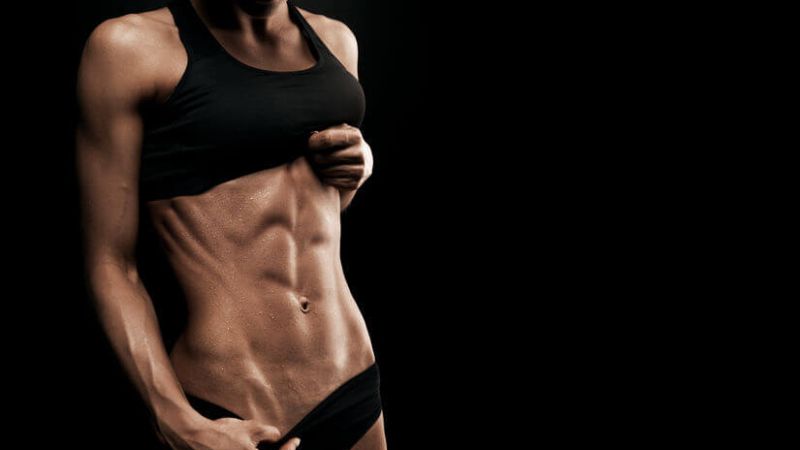
My recommendations are very simple:
- Set your protein intake to 1 to 1.2 grams per pound of body weight.
If you’re very overweight (a man with 25%+ body fat or a woman with 30%+), I recommend you set your protein intake at 40% of your total calories.
- If you exercise regularly and don’t have any medical conditions, set your fat intake to 0.2 to 0.25 grams per pound of body weight.
This gives your body what it needs for basic health purposes and leaves plenty of calories for carbs.
- Allot the rest of your calories to carbs.
Trust me.
Eating a lot of carbs does not make you fat (overeating does) nor does it hinder fat loss (overeating does).
Keeping your carb intake high is going to help you in many ways: better workouts, better meal plans, better mood and energy levels, and more.
Experience it for yourself and you’ll never look back.
- If you’re sedentary or have a medical condition like diabetes, then you’ll probably do better with fewer carbs.
If you’re sedentary, about 25% of daily calories from carbohydrate should be plenty.
If you have a relevant medical condition, check with your doctor as to your “carbohydrate ceiling.” I’ve seen a lot of variation here.
And here’s a handy macro calculation tool that makes it easy:
How to Calculate Your Macros for Gaining Muscle
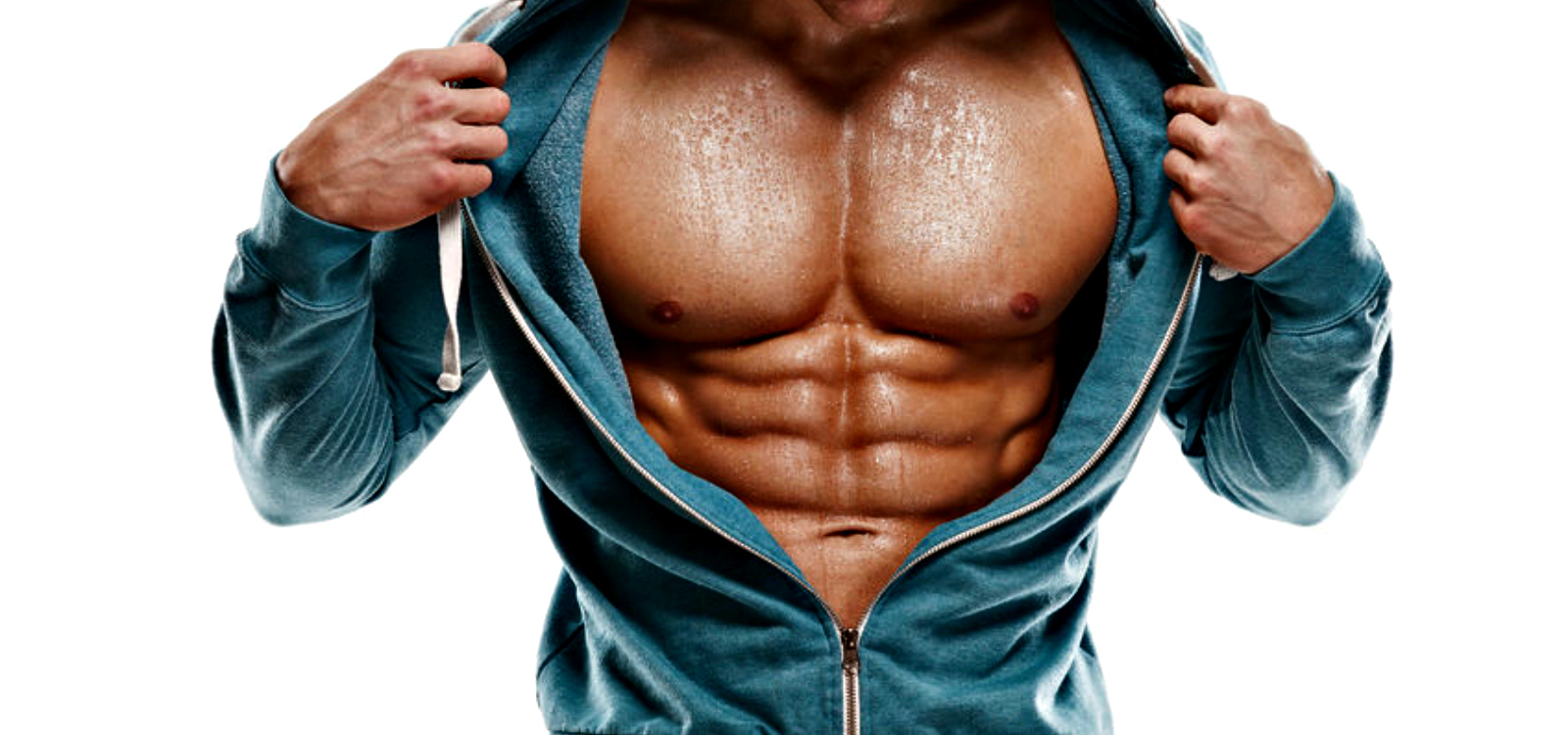
If your goal is maximum muscle growth, then you’ll want to set your macros up a little differently.
Before we get to that, though, you should also know that you only want to “bulk” if your body fat percentage is in the right range.
For guys, this is about 10%. For girls, about 20%.
You can learn more about why here.
With that in place, here’s how I recommend you set up your bulking diet:
- Set your protein to 1 gram per pound of body weight.
You don’t need more than this.
- Set your fat to 0.3 to 0.4 grams per pound of body weight.
This higher fat intake will help you eat more foods you like and hit your daily caloric target.
- Get the rest of your calories from carbs.
Yes, this means eating a lot of carbs and yes, this is going to help tremendously in gaining muscle.
Meal Planning Made Easy Tip #3:
Eat Foods You Like

The cult of “clean eating” is more popular than ever these days,
While I’m all for eating nutritious (“clean”) foods for the purposes of supplying our bodies with essential vitamins and minerals, eating nothing but these foods guarantees nothing in the way of building muscle or losing fat.
The truth is you can be the cleanest eater in the world and still be weak and skinny fat.
Why?
Because, as you now know, when it comes to body composition, how much you eat is more important than what.
The bottom line is this:
There’s no such thing as “weight loss” or “weight gain” foods.
You see, foods don’t have any special properties that cause you to lose or gain weight.
What they do have, however, are varying amounts of calories and varying types of macronutrient profiles.
These two factors are what make certain foods more suitable for losing or gaining weight than others.
As Professor Haub showed us earlier, and as the “If It Fits Your Macros” crowd simply won’t shut up about, you can lose fat eating whatever you want so long as you regulate your intake and maintain a calorie deficit.
That said, certain foods make it easier or harder to lose or gain weight due to their volume, calorie density, and macronutrient breakdown.
Generally speaking, foods that are “good” for weight loss are those that are relatively low in calories but high in volume (and thus satiating).
Examples of such foods are lean meats, whole grains, many fruits and vegetables, and low-fat dairy.
These types of foods also provide an abundance of micronutrients, which is especially important when your calories are restricted (eat too much junk on a calorie-restricted diet and you can develop vitamin and mineral deficiencies).
Foods conducive to weight gain are the opposite: relatively high in calories and relatively low in volume and satiety.
These foods include the obvious like caloric beverages, candy, and other sugar-laden goodies, but quite a few “normal” foods fall into this category as well: oils, refined grains, bacon, butter, low-fiber fruits, and whole fat dairy products, for example.
Think of it this way:
You can only “afford” so many calories every day and you have to watch how you “spend” them.
When dieting for fat loss, you want to spend the majority of your calories on foods that allow you to hit your daily macronutrient and micronutrient needs without “overspending” (overeating).
When dieting for muscle growth, you have quite a few more calories to spend every day.
This makes it easy to hit both your macronutrient and micronutrient targets with calories to spare, which you can then spend on, well, whatever you want.
Now, don’t mistake this section as me railing against eating healthy foods.
I’m not a fan of trying to prove that you can “eat junk and get shredded.” Long-term health matters more than getting super lean while eating boxes of Pop Tarts every week.
As a rule of thumb, if you get the majority (~80%) of your calories from relatively unprocessed, nutrient-dense foods, you can fill the remaining 20% with your favorite dietary sins and be healthy, muscular, and lean.
If you want to learn more about what types of foods qualify as nutritious and “healthy,” check out this article.
Meal Planning Made Easy Tip #4:
Meal Scheduling 101

Generally speaking, when you eat your food doesn’t matter.
So long as you’re managing your energy and macronutrient balances properly and getting the majority of your calories from nutritious foods, meal timing and frequency aren’t going to help your hinder your results.
You can eat three or seven meals per day. You can eat a huge breakfast or skip it and start eating at lunch. You can eat carbs whenever you like (yes, even at night).
That said, if you’re serious about weightlifting, there are a few caveats:
- There’s a fair amount of evidence that eating protein before and after weightlifting workouts can help you build muscle and strength faster.
- There’s also evidence that post-workout carb intake can help as well, mainly due to insulin’s anti-catabolic effects.
So, if you’re lifting weights regularly, I do recommend you have 30 to 40 grams of protein before and after your workouts.
30 to 50 grams of carbohydrate before a workout is great for boosting performance and 0.5 to 1 gram per kilogram of bodyweight is enough for post-workout needs.
Meal Planning Made Easy Tip #5:
Adjust Based on Your Results

There are two litmus tests for any diet or training philosophy:
1. Does it work?
If a program doesn’t get results then it doesn’t matter how “science-based” it claims to be, how many books it has sold, or how many “gurus” swear by it.
It should be jettisoned.
2. Is it sustainable?
If a program gets results but it can’t be sustained over the long term, whether due to complexity, difficulty, or anything else, it too should be abandoned.
We have no problem putting in the work necessary to get the bodies we want, but we don’t want to live like self-abnegating ascetics.
We don’t want to punish ourselves with a daily regimen of tasteless slop and tortuous workouts.
What we want are diet and workout plans that are enjoyable, effective, and viable as a lifestyle.
You should apply those criteria to everything you’ve learned here.
You should expect results from what I’m teaching you in this article and you should be able to enjoy the process.
To be specific, here is what you want to see:
- If you’re dieting to lose weight, you want to lose 0.5 to 2 pounds per week.
Exactly how much you lose will depend on several things, but the primary determinant will be your current body fat percentage.
If you’re lean and looking to get really lean (~10% body fat for men and ~20% for women), you should see something closer to 0.5 pounds lost per week.
(If you’re losing much more than this, you’re probably losing muscle as well.)
On the other hand, if you’re overweight (20%+ body fat for men and 30%+ for women), you should have no problem losing 1 to 2 pounds per week.
As you get leaner, this number will come down.
- If you’re dieting to build muscle, you want to gain 0.25 to 1.5 pounds per week.
Your training experience and current body composition are the major factors in play here.
If you’re new to weightlifting, gaining 1.5 pounds per week (for the first couple of months, at least) is realistic.
If you have several years of heavy weightlifting under your belt, you can’t gain muscle nearly as quickly as the newbie, so 1.5 pounds per week would simply mean you’re gaining too much fat.
If you want to learn more about this, check out this article.
You should also know that while weight change can be and indicator of progress, it can also be unreliable.
One reason for this is water retention, which can fluctuate quite dramatically day by day and week by week (thus causing significant changes in weight).
Another reason is the “body recomposition” phenomenon, which involves gaining muscle and losing fat at the same time (causing a disconnect between what you see on the scale and in the mirror).
You can learn more about these points and how to track your progress correctly here.
Now, let’s talk about adjusting what you’re doing based on your results.
If your body is responding well and changing as desired, you keep doing what you’re doing.
Don’t fix it if it ain’t broken and all that.
If, however, your weight is stuck or going up too quickly, you need to make a change.
If you’re no longer losing weight, read this article to learn what to do next.
If you’re no longer gaining weight, read this article.
If you’re losing weight faster than you expected, this may or may not be a problem.
Some people lose weight, and fat, faster than others.
That’s why I gave a range of expectations earlier and not set, one-size-fits-all numbers.
Rapid weight loss is great, but we want to make sure it’s rapid fat loss and not rapid fat and muscle loss.
The easiest way to know what’s happening is to look to your workouts.
- If you’re losing weight faster than you expected but aren’t losing strength in the gym, you’re not losing muscle to any degree that matters.
That is, if you’re still able to handle your normal weights and get your reps, you have nothing to worry about.
- If you see a slight reduction in strength (5% or less reduction in 1RM), this too isn’t a cause for concern.
Most people experience at least a slight decline in performance while cutting, and some see it early and others later.
Personally, I don’t start losing strength until I’m 4 to 5 weeks into a cut.
- If you see a large reduction in strength (10%+ reduction in 1RM) that’s getting progressively worse, it’s time to make an adjustment.
It’s safe to assume you’re losing muscle and you’d want to either eat more and/or exercise less to reduce the size of the calorie deficit and the amount of stress on your body.
I should note, however, that I’ve worked with many thousands of people and can probably count on one hand the number of times I’ve run into this scenario.
And in each case, the culprit was either eating far too little and/or doing far too much cardio.
(The point being if you simply follow my diet and training advice, you’re not going to lose any amount of muscle to speak of.)
Examples of Good Meal Planning

If your head is hurting at this point and you want to see what a good meal plan looks like, I’ve got you covered.
Click on the link below to see a collection of custom meal plans we’ve made for clients (we’ve done over 5,000…wow!). They should help you:
As you can see, with a little creativity, any and all lifestyles and dietary needs and preferences can be accommodated.
If you’re interested in learning more about my custom meal plan service, click here.
What About Supplements?
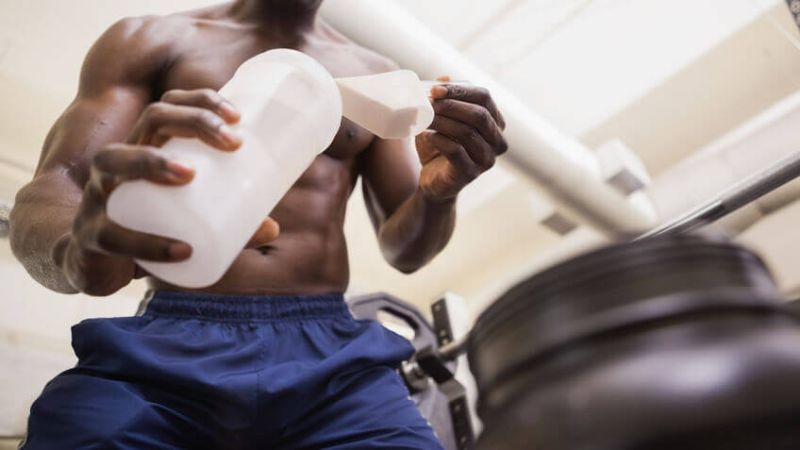
I saved this for last because, quite frankly, it’s far less important than proper diet and training.
You see, supplements don’t build great physiques–dedication to proper training and nutrition does.
Unfortunately, the workout supplement industry is plagued by pseudoscience, ridiculous hype, misleading advertising and endorsements, products full of junk ingredients, underdosing key ingredients, and many other shenanigans.
Most supplement companies produce cheap, junk products and try to dazzle you with ridiculous marketing claims, high-profile (and very expensive) endorsements, pseudo-scientific babble, fancy-sounding proprietary blends, and flashy packaging.
So, while workout supplements don’t play a vital role in building muscle and losing fat, and many are a complete waste of money…the right ones can help.
The truth of the matter is there are safe, natural substances that have been scientifically proven to deliver benefits such as increased strength, muscle endurance and growth, fat loss, and more.
As a part of my work, it’s been my job to know what these substances are, and find products with them that I can use myself and recommend to others.
Finding high-quality, effective, and fairly priced products has always been a struggle, though.
That’s why I took matters into my own hands and decided to create my own supplements. And not just another line of “me too” supplements–the exact formulations I myself have always wanted and wished others would create.
I won’t go into a whole spiel here, but if you want to learn more about my supplement line, check this out. (And if you’d like to know exactly what supplements to take to reach your fitness goals, take the Legion Supplement Finder Quiz.)
For the purpose of this article, let’s just quickly review the supplements that are going to help you get the most out of your diet and training in general.
Creatine
Creatine is a substance found naturally in the body and in foods like red meat. It’s perhaps the most researched molecule in the world of sport supplements–the subject of hundreds of studies–and the consensus is very clear:
Supplementation with creatine helps…
You may have heard that creatine is bad for your kidneys, but these claims have been categorically and repeatedly disproven. In healthy subjects, creatine has been shown to have no harmful side effects, in both short- or long-term usage. People with kidney disease are not advised to supplement with creatine, however.
If you have healthy kidneys, I highly recommend that you supplement with creatine. It’s safe, cheap, and effective.
In terms of specific products, I use my own, of course, which is called RECHARGE.
RECHARGE is 100% naturally sweetened and flavored and each serving contains:
- 5 grams of creatine monohydrate
- 2100 milligrams of L-carnitine L-tartrate
- 10.8 milligrams of corosolic acid
This gives you the proven strength, size, and recovery benefits of creatine monohydrate plus the muscle repair and insulin sensitivity benefits of L-carnitine L-tartrate and corosolic acid.
Protein Powder
You don’t need protein supplements to gain muscle, but, considering how much protein you need to eat every day to maximize muscle growth, getting all your protein from whole food can be impractical.
That’s the main reason I created (and use) a whey protein supplement. (There’s also evidence that whey protein is particularly good for your post-workout nutrition.)
WHEY+ is 100% naturally sweetened and flavored whey isolate that is made from milk sourced from small dairy farms in Ireland, which are known for their exceptionally high-quality dairy.
I can confidently say that this is the creamiest, tastiest, healthiest all-natural whey protein powder you can find.
PHOENIX Fat Burner
With the weight loss market valued at a staggering $60.5 billion and more than one-third of U.S. adults obese, it’s no surprise that there’s a glut of “fat burners” for sale these days.
And for the same reasons it’s also no surprise that fat burners are some of the most expensive supplements on the shelves and feature some of the loudest marketing claims, often making big promises of “scientifically proven” rapid fat loss.
The reality is most “fat burners” are junk but there are a handful of natural, safe substances that have been scientifically proven to accelerate fat loss. And that’s why I created PHOENIX.
PHOENIX’s caffeine-free formulation is helps you burn fat faster in three different ways:
- It dramatically increases metabolic speed.
- It amplifies the power of fat-burning chemicals produced by your body.
- It increases the feeling of fullness from food.
It accomplishes this through clinically effective dosages of several ingredients, including…
- Synephrine. This increases both basal metabolic rate and lipolysis, inhibits the activity of certain fat cell receptors that prevent fat mobilization, and increases the thermic effect of food (the “energy cost” of metabolizing food).
- Naringin. This stimulates the production of a hormone called adiponectin, which is involved in the breakdown of fat cells, and that it activates a type of receptor in fat cells that regulates fat mobilization (the PPARα receptor).
Through these mechanisms, naringin also works synergistically with synephrine and hesperidin to further accelerate the basal metabolic rate.
- Hesperidin. Like naringin, this also stimulates the production of adiponectin and activates the PPARa receptor. It also improves blood flow and reduces the inflammation of blood vessels.
- Epigallocatechin gallate (EGCG). This inhibits the activity of a different enzyme also responsible for breaking down neurotransmitters that induce lipolysis. It has also been shown to reduce abdominal fat in particular.
- Forskolin. This increases blood plasma and intracellular levels of a molecule known as cAMP. When cAMP is high, it signifies a lack of ATP (the most basic form of cellular energy in the body) and thus initiates a process to make more ATP by burning through energy reserves (body fat).
Research has show that supplementation with forskolin accelerates fat loss and increases testosterone levels.
- And more…
The bottom line is if you want to lose fat faster without pumping yourself full of stimulants or other potentially harmful chemicals…then you want to try PHOENIX.
Pre-Workout Drink
There’s no question that a pre-workout supplement can get you fired up to get to work in the gym. There are downsides and potential risks, however.
Many pre-workout drinks are stuffed full of ineffective ingredients and/or minuscule dosages of otherwise good ingredients, making them little more than a few cheap stimulants with some “pixie dust” sprinkled in to make for a pretty label and convincing ad copy.
Many others don’t even have stimulants going for them and are just complete duds.
Others still are downright dangerous, like USPLabs’ popular pre-workout “Jack3d,”which contained a powerful (and now banned) stimulant known as DMAA.
Even worse was the popular pre-workout supplement “Craze,” which contained a chemical similar to methamphetamine.
The reality is it’s very hard to find a pre-workout supplement that’s light on stimulants but heavy on natural, safe, performance-enhancing ingredients like beta-alanine, betaine, and citrulline.
And that’s why I made my own pre-workout supplement. It’s called PULSE and it contains 6 of the most effective performance-enhancing ingredients available:
- Caffeine. Caffeine is good for more than the energy boost. It also increases muscle endurance and strength.
- Beta-Alanine. Beta-alanine is a naturally occurring amino acid that reduces exercise-induced fatigue, improves anaerobic exercise capacity, and can accelerate muscle growth.
- Citrulline Malate. Citrulline is an amino acid that improves muscle endurance, relieves muscle soreness, and improves aerobic performance.
- Betaine. Betaine is a compound found in plants like beets that improves muscle endurance, increases strength, and increases human growth hormone and insulin-like growth factor 1 production in response to acute exercise.
- Ornithine. Ornithine is an amino acid found in high amounts in dairy and meat that reduces fatigue in prolonged exercise and promotes lipid oxidation (the burning of fat for energy as opposed to carbohydrate or glycogen).
- Theanine. Theanine is an amino acid found primarily in tea that reduces the effects of mental and physical stress, increases the production of nitric oxide, which improves blood flow, and improves alertness, focus, attention, memory, mental task performance, and mood.
And what you won’t find in PULSE is equally special:
- No artificial sweeteners or flavors..
- No artificial food dyes.
- No unnecessary fillers, carbohydrate powders, or junk ingredients.
The bottom line is if you want to know what a pre-workout is supposed to feel like…if you want to experience the type of energy rush and performance boost that only clinically effective dosages of scientifically validated ingredients can deliver…then you want to try PULSE.
And again, if you feel confused about what supplements you should take to reach your goals, take the Legion Supplement Finder Quiz to learn exactly what supplements are right for you. It’s the best way to ensure you get the most out of your supplement regimen.
What did you think about meal planning? Have anything else you’d like to add? Let me know in the comments below!
+ Scientific References
- Keim NL, Van Loan MD, Horn WF, Barbieri TF, Mayclin PL. Weight loss is greater with consumption of large morning meals and fat-free mass is preserved with large evening meals in women on a controlled weight reduction regimen. J Nutr. 1997;127(1):75-82. doi:10.1093/jn/127.1.75
- Wooley SC. Physiologic versus cognitive factors in short term food regulation in the obese and nonobese. Psychosom Med. 34(1):62-68. doi:10.1097/00006842-197201000-00007
- Hämäläinen E, Adlercreutz H, Puska P, Pietinen P. Diet and serum sex hormones in healthy men. J Steroid Biochem. 1984;20(1):459-464. doi:10.1016/0022-4731(84)90254-1
- Dorgan JF, Judd JT, Longcope C, et al. Effects of dietary fat and fiber on plasma and urine androgens and estrogens in men: a controlled feeding study. Am J Clin Nutr. 1996;64(6):850-855. doi:10.1093/ajcn/64.6.850
- Schwab U, Lauritzen L, Tholstrup T, et al. Effect of the amount and type of dietary fat on cardiometabolic risk factors and risk of developing type 2 diabetes, cardiovascular diseases, and cancer: a systematic review. Food Nutr Res. 2014;58. doi:10.3402/fnr.v58.25145
- Helms ER, Aragon AA, Fitschen PJ. Evidence-based recommendations for natural bodybuilding contest preparation: nutrition and supplementation. J Int Soc Sports Nutr. 2014;11:20. doi:10.1186/1550-2783-11-20
- Walberg JL, Leidy MK, Sturgill DJ, Hinkle DE, Ritchey SJ, Sebolt DR. Macronutrient content of a hypoenergy diet affects nitrogen retention and muscle function in weight lifters. Int J Sports Med. 1988;9(4):261-266. doi:10.1055/s-2007-1025018
- Garthe I, Raastad T, Refsnes PE, Koivisto A, Sundgot-Borgen J. Effect of two different weight-loss rates on body composition and strength and power-related performance in elite athletes. Int J Sport Nutr Exerc Metab. 2011;21(2):97-104. http://www.ncbi.nlm.nih.gov/pubmed/21558571. Accessed September 19, 2019.
- Howarth KR, Phillips SM, MacDonald MJ, Richards D, Moreau NA, Gibala MJ. Effect of glycogen availability on human skeletal muscle protein turnover during exercise and recovery. J Appl Physiol. 2010;109(2):431-438. doi:10.1152/japplphysiol.00108.2009
- Lane AR, Duke JW, Hackney AC. Influence of dietary carbohydrate intake on the free testosterone: cortisol ratio responses to short-term intensive exercise training. Eur J Appl Physiol. 2010;108(6):1125-1131. doi:10.1007/s00421-009-1220-5
- Creer A, Gallagher P, Slivka D, Jemiolo B, Fink W, Trappe S. Influence of muscle glycogen availability on ERK1/2 and Akt signaling after resistance exercise in human skeletal muscle. J Appl Physiol. 2005;99(3):950-956. doi:10.1152/japplphysiol.00110.2005
- Denne SC, Liechty EA, Liu YM, Brechtel G, Baron AD. Proteolysis in skeletal muscle and whole body in response to euglycemic hyperinsulinemia in normal adults. Am J Physiol. 1991;261(6 Pt 1):E809-14. doi:10.1152/ajpendo.1991.261.6.E809
- Gelfand RA, Barrett EJ. Effect of physiologic hyperinsulinemia on skeletal muscle protein synthesis and breakdown in man. J Clin Invest. 1987;80(1):1-6. doi:10.1172/JCI113033
- Fryburg DA, Jahn LA, Hill SA, Oliveras DM, Barrett EJ. Insulin and insulin-like growth factor-I enhance human skeletal muscle protein anabolism during hyperaminoacidemia by different mechanisms. J Clin Invest. 1995;96(4):1722-1729. doi:10.1172/JCI118217
- Howarth KR, Phillips SM, MacDonald MJ, Richards D, Moreau NA, Gibala MJ. Effect of glycogen availability on human skeletal muscle protein turnover during exercise and recovery. J Appl Physiol. 2010;109(2):431-438. doi:10.1152/japplphysiol.00108.2009
- Miller SL, Wolfe RR. Physical exercise as a modulator of adaptation to low and high carbohydrate and low and high fat intakes. Eur J Clin Nutr. 1999;53 Suppl 1:S112-9. http://www.ncbi.nlm.nih.gov/pubmed/10365988. Accessed September 19, 2019.
- Robergs RA, Pearson DR, Costill DL, et al. Muscle glycogenolysis during differing intensities of weight-resistance exercise. J Appl Physiol. 1991;70(4):1700-1706. doi:10.1152/jappl.1991.70.4.1700
- Calorie Partitioning: Part 1 : Bodyrecomposition. https://bodyrecomposition.com/muscle-gain/calorie-partitioning-part-1.html/. Accessed September 19, 2019.
- Churchward-Venne TA, Murphy CH, Longland TM, Phillips SM. Role of protein and amino acids in promoting lean mass accretion with resistance exercise and attenuating lean mass loss during energy deficit in humans. Amino Acids. 2013;45(2):231-240. doi:10.1007/s00726-013-1506-0
- Smith J, Mc Naughton L. The effects of intensity of exercise on excess postexercise oxygen consumption and energy expenditure in moderately trained men and women. Eur J Appl Physiol Occup Physiol. 1993;67(5):420-425. doi:10.1007/bf00376458
- Stiegler P, Cunliffe A. The role of diet and exercise for the maintenance of fat-free mass and resting metabolic rate during weight loss. Sports Med. 2006;36(3):239-262. doi:10.2165/00007256-200636030-00005
- Mettler S, Mitchell N, Tipton KD. Increased protein intake reduces lean body mass loss during weight loss in athletes. Med Sci Sports Exerc. 2010;42(2):326-337. doi:10.1249/MSS.0b013e3181b2ef8e
- Sacks FM, Bray GA, Carey VJ, et al. Comparison of weight-loss diets with different compositions of fat, protein, and carbohydrates. N Engl J Med. 2009;360(9):859-873. doi:10.1056/NEJMoa0804748
- Phillips SA, Jurva JW, Syed AQ, et al. Benefit of low-fat over low-carbohydrate diet on endothelial health in obesity. Hypertens (Dallas, Tex 1979). 2008;51(2):376-382. doi:10.1161/HYPERTENSIONAHA.107.101824
- Johnston CS, Tjonn SL, Swan PD, White A, Hutchins H, Sears B. Ketogenic low-carbohydrate diets have no metabolic advantage over nonketogenic low-carbohydrate diets. Am J Clin Nutr. 2006;83(5):1055-1061. doi:10.1093/ajcn/83.5.1055
- Thomson CA, Stopeck AT, Bea JW, et al. Changes in body weight and metabolic indexes in overweight breast cancer survivors enrolled in a randomized trial of low-fat vs. reduced carbohydrate diets. Nutr Cancer. 2010;62(8):1142-1152. doi:10.1080/01635581.2010.513803
- Hall KD, Bemis T, Brychta R, et al. Calorie for Calorie, Dietary Fat Restriction Results in More Body Fat Loss than Carbohydrate Restriction in People with Obesity. Cell Metab. 2015;22(3):427-436. doi:10.1016/j.cmet.2015.07.021
- Mettler S, Mitchell N, Tipton KD. Increased protein intake reduces lean body mass loss during weight loss in athletes. Med Sci Sports Exerc. 2010;42(2):326-337. doi:10.1249/MSS.0b013e3181b2ef8e
- Layman DK, Boileau RA, Erickson DJ, et al. A reduced ratio of dietary carbohydrate to protein improves body composition and blood lipid profiles during weight loss in adult women. J Nutr. 2003;133(2):411-417. doi:10.1093/jn/133.2.411
- Phillips SM, van Loon LJC. Dietary protein for athletes: From requirements to optimum adaptation. J Sports Sci. 2011;29(SUPPL. 1). doi:10.1080/02640414.2011.619204
- Helms ER, Zinn C, Rowlands DS, Brown SR. A systematic review of dietary protein during caloric restriction in resistance trained lean athletes: a case for higher intakes. Int J Sport Nutr Exerc Metab. 2014;24(2):127-138. doi:10.1123/ijsnem.2013-0054
- Horton TJ, Drougas H, Brachey A, Reed GW, Peters JC, Hill JO. Fat and carbohydrate overfeeding in humans: different effects on energy storage. Am J Clin Nutr. 1995;62(1):19-29. doi:10.1093/ajcn/62.1.19
- Tomiyama AJ, Mann T, Vinas D, Hunger JM, Dejager J, Taylor SE. Low calorie dieting increases cortisol. Psychosom Med. 2010;72(4):357-364. doi:10.1097/PSY.0b013e3181d9523c
- Cangemi R, Friedmann AJ, Holloszy JO, Fontana L. Long-term effects of calorie restriction on serum sex-hormone concentrations in men. Aging Cell. 2010;9(2):236-242. doi:10.1111/j.1474-9726.2010.00553.x
- Zito CI, Qin H, Blenis J, Bennett AM. SHP-2 regulates cell growth by controlling the mTOR/S6 kinase 1 pathway. J Biol Chem. 2007;282(10):6946-6953. doi:10.1074/jbc.M608338200
- Longland TM, Oikawa SY, Mitchell CJ, DeVries MC, Phillips SM. Higher compared with lower dietary protein during an energy deficit combined with intense exercise promotes greater lean mass gain and fat mass loss: A randomized trial. Am J Clin Nutr. 2016;103(3):738-746. doi:10.3945/ajcn.115.119339
- Huovinen HT, Hulmi JJ, Isolehto J, et al. Body composition and power performance improved after weight reduction in male athletes without hampering hormonal balance. J Strength Cond Res. 2015;29(1):29-36. doi:10.1519/JSC.0000000000000619
- Hand GA, Shook RP, Paluch AE, et al. The energy balance study: the design and baseline results for a longitudinal study of energy balance. Res Q Exerc Sport. 2013;84(3):275-286. doi:10.1080/02701367.2013.816224
- Energy Balance and Obesity, Healthy Weight Basics, NHLBI, NIH. https://www.nhlbi.nih.gov/health/educational/wecan/healthy-weight-basics/balance.htm. Accessed September 19, 2019.


